Crescia di pasqua is a fluffy and soft traditional Italian bread that is served specially during Easter celebration.
Prepared with parmigiano and pecorino cheese, this delicious bread is a must at Easter breakfast alongside with traditional hard-boiled eggs and cold meat cuts.
What is crescia di pasqua?
Crescia di pasqua is a savory bread from various regions of central Italy. The recipe consists of a yeast-based bread with a salty and peppery strong flavor.
This Italian cheese bread is also known by many other names that depend on the region in Italy where its prepared, for example: Pizza al formaggio, pizza di pasqua marchigiana, pizza di pasqua abruzzese, torta di pasqua, torta al formaggio, etc.
How its served
Traditionally, crescia di pasqua is served at Easter breakfast pairing it with another classic: Salame Corallina, a typical cured meat served also for this festivity. It is also served as a starter during Easter lunch or during the pasquetta picnic (more about this below).
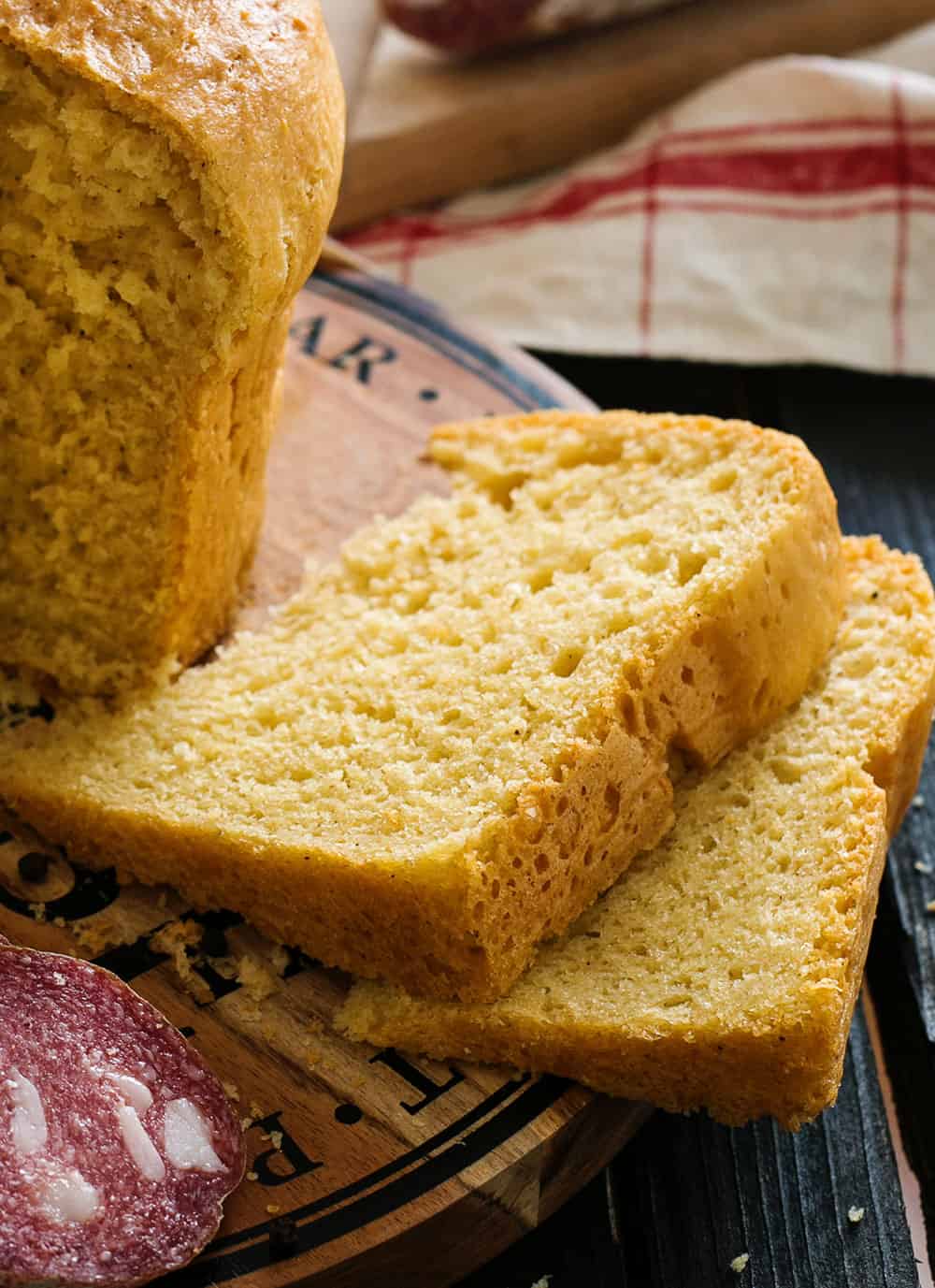
Italian Easter
In Italy, Easter is a family festivity where, as in most Italian parties, the family gathers around the table to celebrate with a huge amount of traditional and delicious dishes.
Besides of the religious context, I really enjoy Italian Easter because of the gastronomic meaning: On Easter Sunday it is a tradition to start with a good breakfast, something rare in this country where the typical breakfast is only coffee and some baking good.
That morning it is common to find on the table sweet and savory dishes such as boiled eggs, corallina, cakes, casatiello, colomba (sweet bread) etc. Depending on the region, every home has its preferences and customs.
After breakfast is finished, preparation for the lunch begins, which is equally abundant and appetizing with typical meat dishes such as the famous baked lamb with potatoes (agnello con patate). Crescia di pasqua also makes its appearance here, this time as an appetizer paired with cheese, salami and other cured meats.

But there is more, the day after, that is, Monday; the famous pasquetta (little easter) arrives, where it is tradition to go to the countryside and have a picnic with various typical dishes, such as this crescia al formaggio, the pasqualina cake, the casatiello, etc. Italians really love to enjoy the newly arrived spring weather and for me this is one of my favourite days in the year!
Step By Step Recipe
Important: The ingredients list with the exact measurements can be found below, in the recipe card. Please take in mind that while I posted the measurements also in US cups, if you want better results, I strongly suggest to use a kitchen scale instead.
Place the water on a bowl or glass, add malt extract and yeast. Mix until everything is well combined.
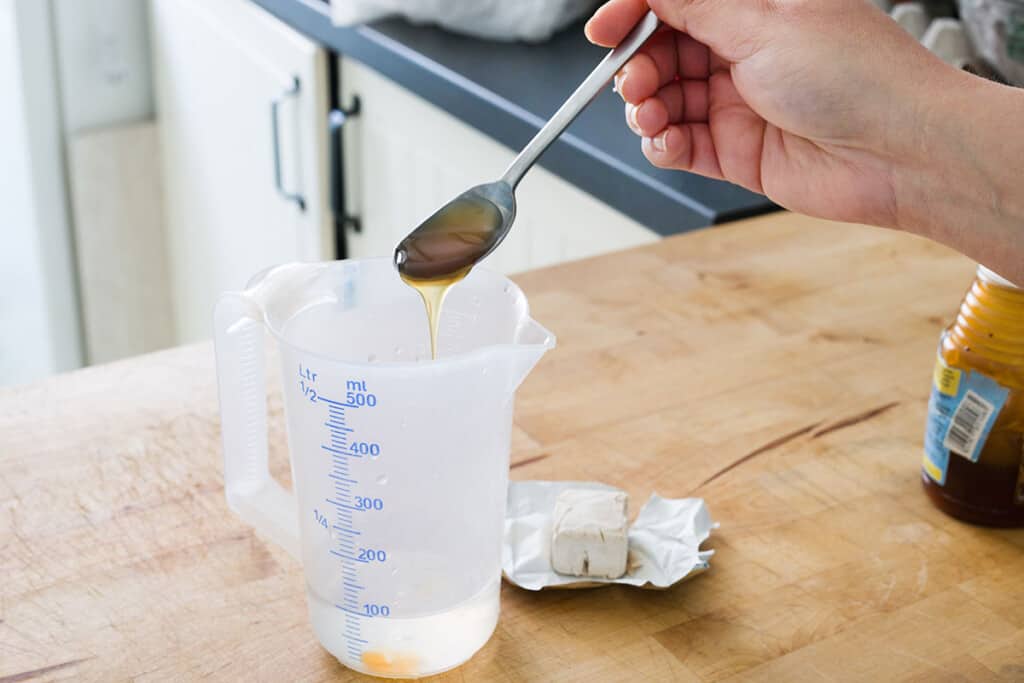
In a large bowl or the bowl of a stand mixer, place flours and make a deep well in the center. Add the water and yeast mixture and mix lightly to make a runny dough (poolish). Cover with more flour from the sides.
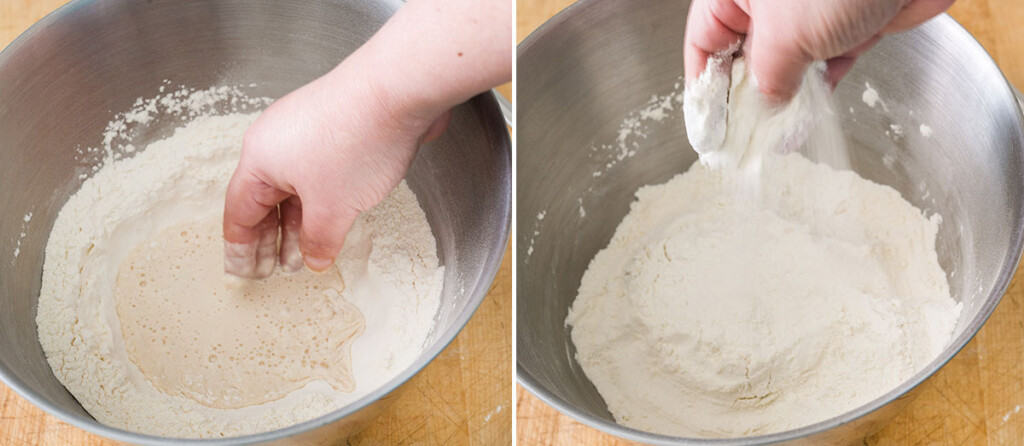
Cover the bowl with a clean kitchen towel and with a plastic bag and place it in a warm zone, for example inside the oven with the lights turned on or near to a home radiator if your kitchen is too cold. Let it rest for 30 minutes.
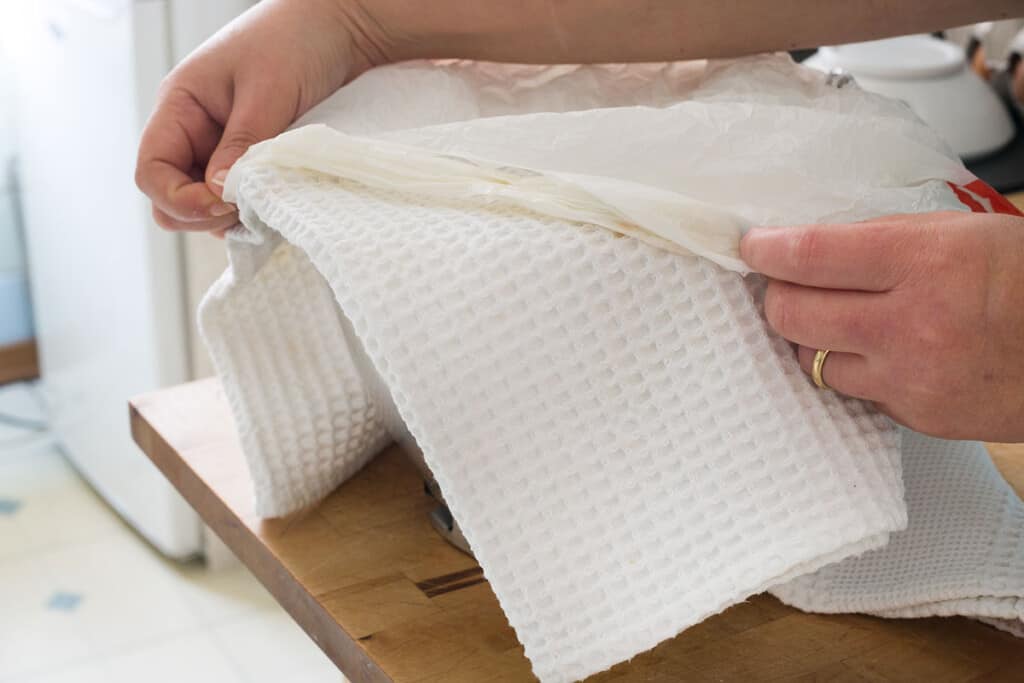
Meanwhile, in a medium bowl, crack the eggs and add the extra virgin olive oil, parmigiano and pecorino cheese, salt and a good amount of freshly ground black pepper. Mix to incorporate all ingredients.
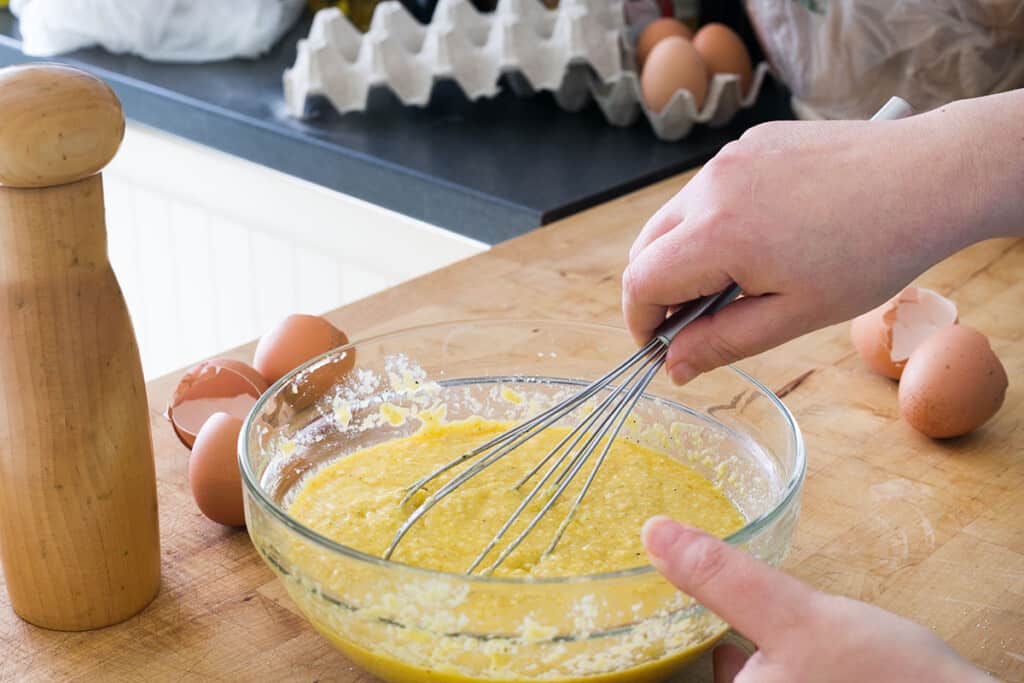
Add the egg mixture to the bowl with flour and poolish you made before. With the hook attached, start kneading for 2 minutes. Then add the lard and keep kneading at medium speed for 5 more minutes. You’ll end with a sticky dough like the one on the photo below.
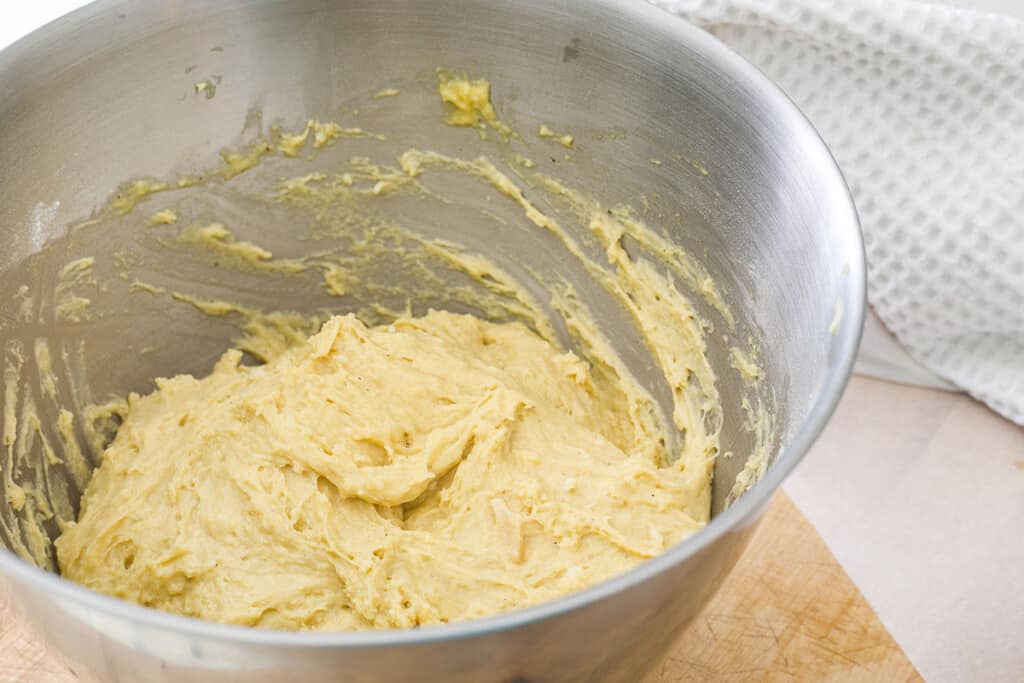
Cover with a kitchen towel and let it proof until doubled in size (about 2 hours).
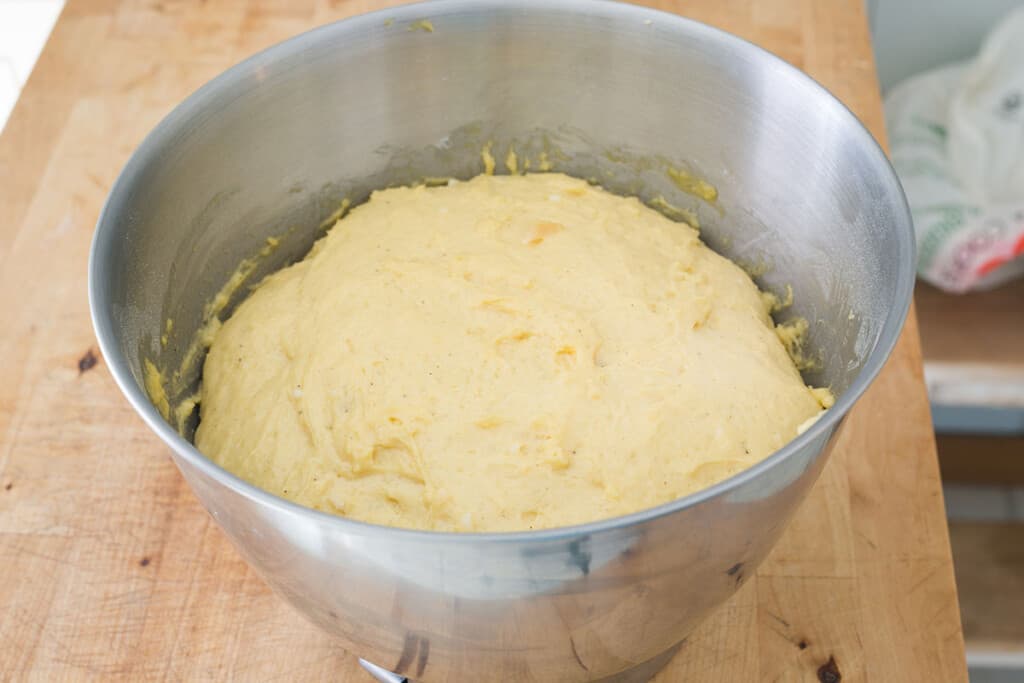
Grease a 6.5″ (16 cm) large and 8″(20 cm) deep aluminum pan with olive oil. If you don’t have a similar pan, you can use parchment paper to line it and make it deeper, as seen in the photo below.
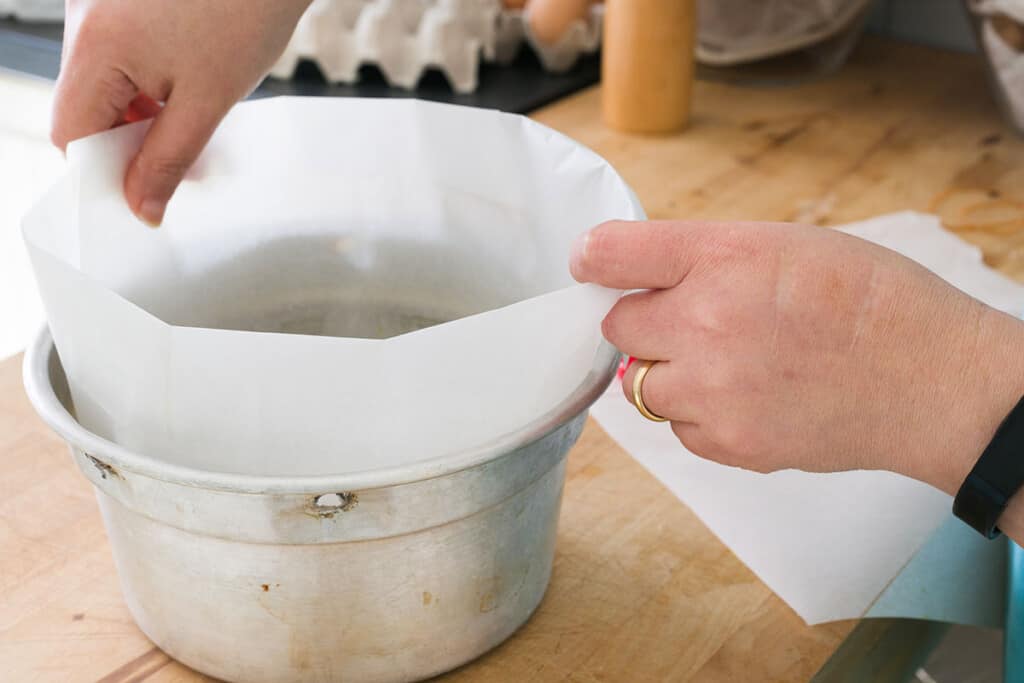
Slightly oil your hands and carefully, transfer the dough to the pan and let it proof again until doubled in size.
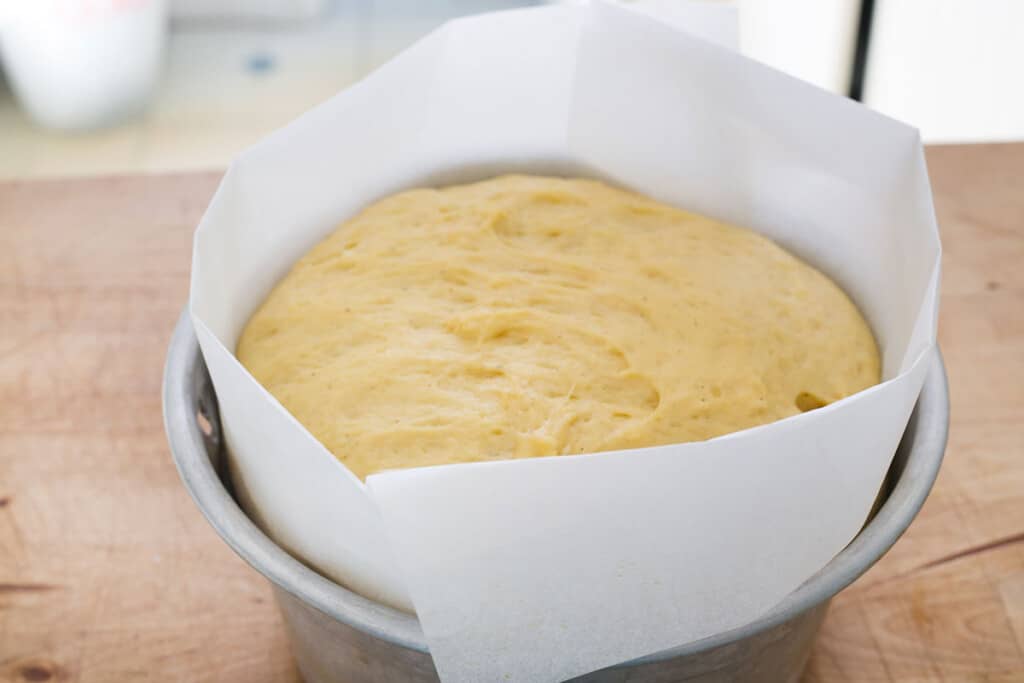
Bake
Heat the oven to 375 °F (190 °C), once the oven has reached the indicated temperature, open it and pour half a glass of water on the bottom of the oven to create steam (or use the steam function if your oven has it).
Place the pan into the oven and bake for 50 minutes or until the surface has an even golden color and when you insert a toothpick in the bread it comes out clean.
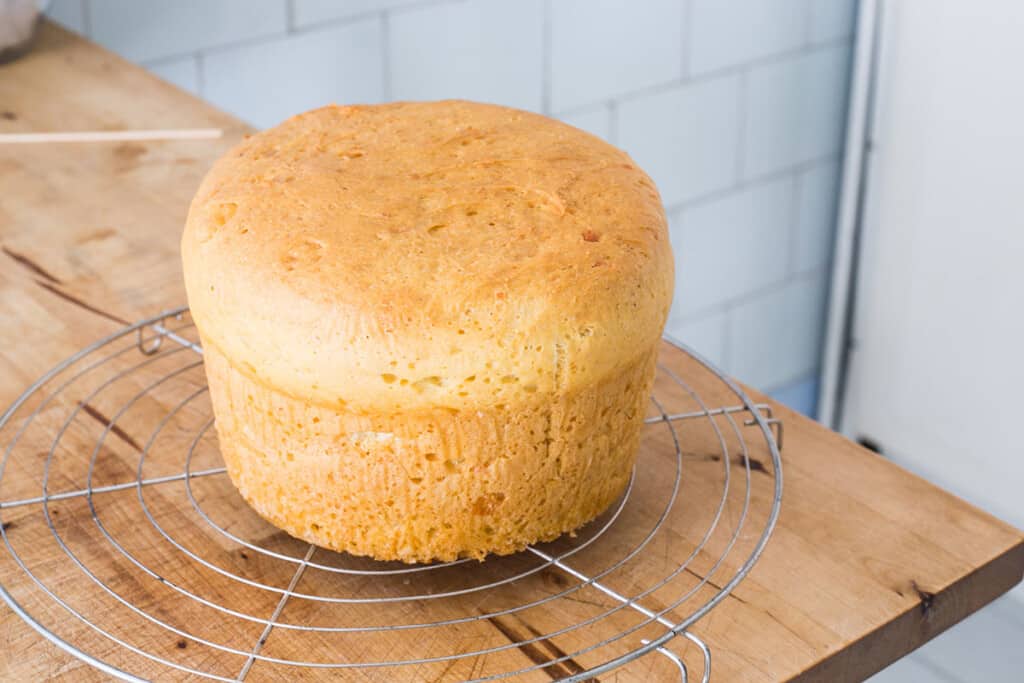
Notes
- All the ingredients have to be at room temperature or at least not straight from the fridge, especially butter and eggs.
- The water needs to be lukewarm, not hot or it can kill the yeast and preven the dough from raising.
- You can also use a panettone paper pan. The important thing is that it should have high edges because the dough raise at least twice its size.
- Pecorino is a cheese with a strong flavor, if you are not used to it, it is best to decrease the amount and replace it with parmigiano cheese.
- This crescia di pasqua is more delicious if it is made at least two to three days in advance.
How To Store
This crescia di pasqua lasts up to 5 days at room temperature. To prevent the pizza from getting too dry, you can wrap it with cling film or place it on container with a tight lid.
More Italian recipes
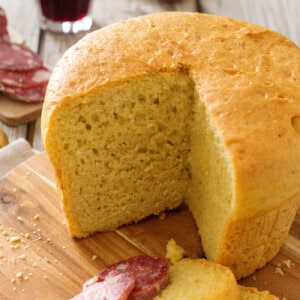
Crescia di pasqua (Italian Easter cheese bread)
Ingredients
- 250 g (1 ⅔ cups) strong bread flour (with at least 11% protein)
- 250 g (1 ⅔ cups) all purpose flour
- 5 medium eggs
- 100 g (1 cup) pecorino cheese (grated)
- 100 g (1 cup) parmigiano cheese (grated)
- 50 g (¼ cup) extra virgin olive oil
- 50 g (¼ cup) pork lard (or shortening, or butter)
- 100 ml lukewarm water (a little less than ½ cup)
- 25 g fresh yeast (or 2 ¼ tsp of dry active yeast)
- 1 tsp salt
- 1 tsp malt extract (or honey)
- black pepper (to taste)
Instructions
- Place the water on a bowl or glass, add malt extract and yeast. Mix until everything is combined.
- In a large bowl or the bowl of a stand mixer, place flours and make a deep well in the center.
- Add water and yeast mixture and mix lightly to make a runny dough (poolish). Cover with flour.
- Cover the bowl with a kitchen towel and place it in a warm zone. Let it rest for 30 minutes.
- Mix eggs with olive oil, parmigiano and pecorino cheese, salt and freshly ground black pepper until everything is combined.
- Add the eggs mixture to the bowl with flour and knead for 2 minutes in your stand mixer.
- Add lard (or butter) and keep kneading at medium speed for 5 more minutes. You’ll end with a sticky dough like the one on the photo below.
- Cover with a kitchen towel and let it proof until doubled in size (about 2 hours).
- Grease a 6.5″ (16 cm) large and 8″(20 cm) deep aluminum pan with olive oil. If you don’t have a similar pan, you can use parchment paper to line it and make it deeper, as seen in the photo below.
- Slightly oil your hands and carefully, transfer the dough to the pan and let it proof again until doubled in size (about 1 hour).
BAKE
- Heat the oven to 375 °F (190 °C), once the oven has reached the indicated temperature, open it and pour half a glass of water on the bottom of the oven to create steam (or use the steam function if your oven has it).
- Place the pan into the oven and bake for 50 minutes or until the surface has an even golden color and when you insert a toothpick in the bread it comes out clean.
Notes
- All the ingredients have to be at room temperature or at least not straight from the fridge, especially butter and eggs.
- The water needs to be lukewarm, not hot or it can kill the yeast and preven the dough from raising.
- You can also use a panettone paper pan. The important thing is that it should have high edges because the dough raise at least twice its size.
- Pecorino is a cheese with a strong flavor, if you are not used to it, it is best to decrease the amount and replace it with parmigiano cheese.
- This crescia di pasqua is more delicious if it is made at least two to three days in advance.
Nutrition Information
Did you enjoy crescia di pasqua recipe? please let us know on the comments below! we’d love hearing from you. Also, don’t forget to rate this recipe and follow us along on PINTEREST, INSTAGRAM, FACEBOOK and YOUTUBE .


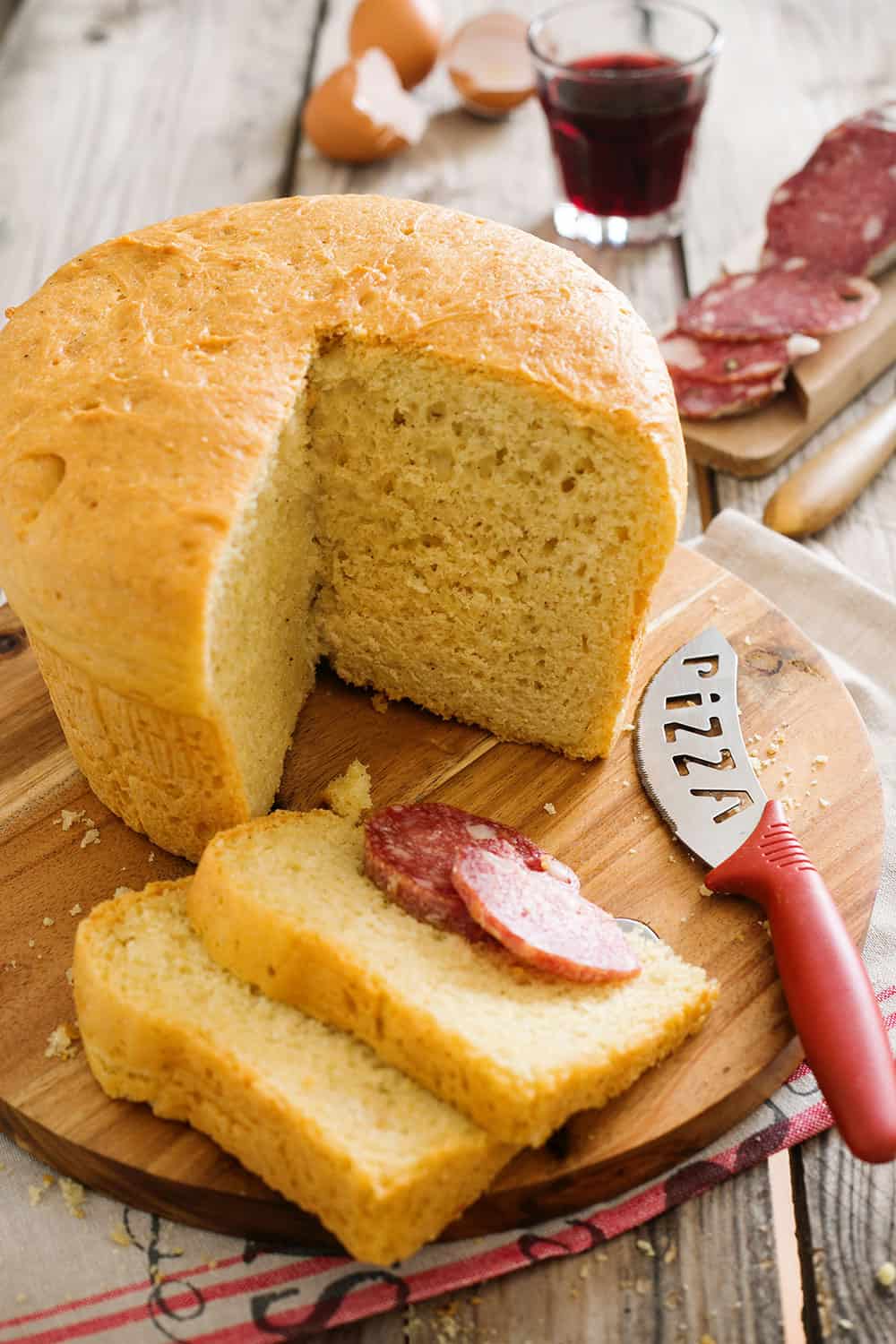
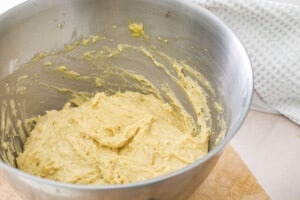
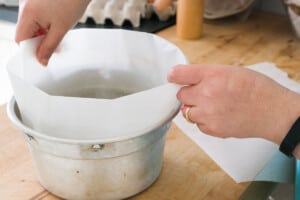
Crescia di Pasqua is never missing on our Easter celebration. Together with Salame Corallina, they make a great combination. Can’t wait to make this again! I will be bookmarking this recipe, thank you!